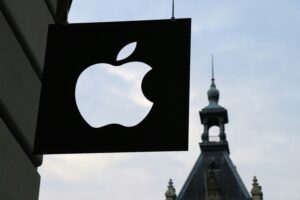Mickey Mouse free, Disney’s intellectual property rights expire. What are the possible effects on brand equity?
Have you got a question?
According to US laws, the copyright of works registered after 1923 can be protected for a maximum of 95 years, and this is how starting from 2024 the original version of Mickey Mouse is in the public domain allowing, in theory, artists and creative people to reinterpret it, subvert it and treat it as if it were a common heritage.
The liberalization in question, however, concerns only the 1928 version, which appeared in the short film “Steamboat Willie”. Here Mickey Mouse is far from the most familiar representation, since he does not speak, has completely black eyes and has no gloves on his hands.
However, all subsequent designs of the famous rodent remain under the copyright of Disney.
This represents, for the famous animation company, a significant change of direction with respect to the ferocious protection implemented on its copyright, also through the “Copyright Act” of 1976 and the “Sonny Bono Copyright Term Extension Act of 1998 (nicknamed , “Mickey Mouse Protection Act” precisely due to the strong contribution given by Disney in its drafting).
It is also true that open-sourcing, even if limited, of Mickey Mouse could result in reinterpretations that are not always consistent with the “healthy” image that Disney has built, defended and instilled in the public over the years, leading to a progressive dilution of the brand name.
And in fact, the distorted exploitation of the first version of Mickey Mouse is already underway: emblematic is the trailer of the horror film directed by Jamie Bailey and entitled “Mickey’s Mouse Trap”, in which a masked killer has the features of the first Mickey Mouse.
In other words, Disney runs the risk of seeing the coherence of its brand and more particularly, of the image of its iconic “forefather” compromised and progressively eroded, as well as the perceptions and associations – generally positive – that the public historically attributes to them (in marketing this concept is known as brand equity).
What strategy to adopt, then, against this creative drift? On the one hand, Disney should continue to protect the “Mickey Mouse” brand, at least in its non-liberalized versions, making use of the regulatory instruments already mentioned; on the other hand, it could commit to sponsoring all creative reinterpretations (relating, however, to the liberalized version) that are consistent with its historical values, always keeping in mind the famous motto: “If you can dream it, you can do it”.
-
Via Benedetto Brin 55, Scala B, Interno A13, 80142 Napoli
Italia
Book an appointment
Fill out our contact forms and organise an appointment with one of our experts.
Condividi questo articolo
Got a question?
Please complete this form to send an enquiry. Your message will be sent to one member of our team.
Related posts

EUROPEAN UNION INQUIRY ON ALPHABET, META, AND APPLE: A DEEP DIVE INTO DIGITAL MARKET TENSIONS
The European Commission has recently launched an in-depth investigation into tech giants Apple, Alphabet, and Meta to assess the compliance of their services

Shipbuilding: Innovative Technologies for a Sustainable Future
Maritime transport can be considered a fundamental pillar of the global economy; however, its environmental impact raises significant concerns.

THE EUROPEAN COMMISSION VS. META: MAJOR RISKS FOR THE SOCIAL MEDIA GIANT.
This July, a new chapter opened in the crusade that the European Union is conducting against the Big Tech companies of the global


